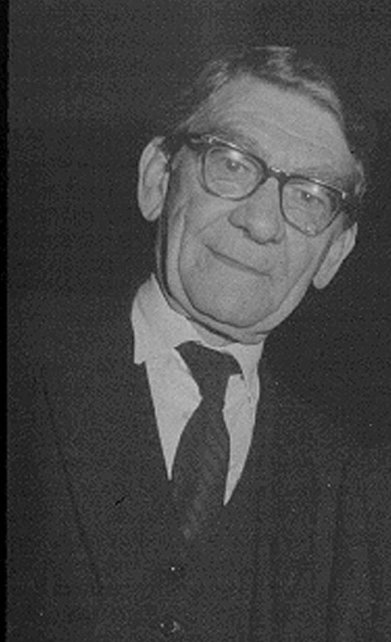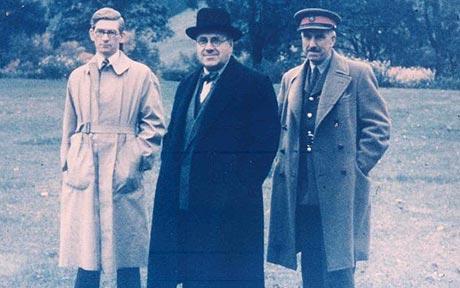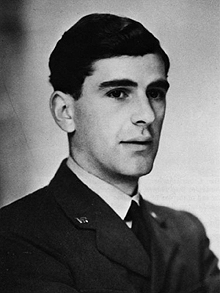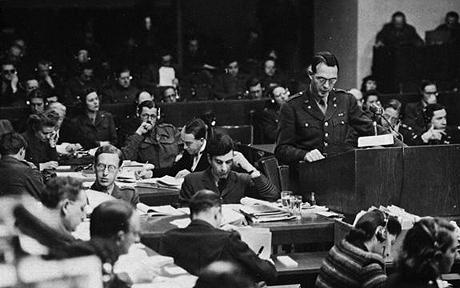<Back to Index>
- Historian and Cryptanalyst Francis Harry Hinsley, 1918
- Historian and Intelligence Officer Peter John Ambrose Calvocoressi, 1912
PAGE SPONSOR


Sir Francis Harry Hinsley OBE (26 November 1918 16 February 1998) was an English historian and cryptanalyst. He worked at Bletchley Park during the Second World War and wrote widely on the history of international relations and British Intelligence during the Second World War. He was known as Harry Hinsley.
Hinsley was the son of a miner. His mother Emma Hinsley (née Adey) was a school caretaker, and they lived in Birchills, then in the parish of Bloxwich, Walsall. Harry was educated at Queen Mary's Grammar School, Walsall, and in 1937 won a scholarship to study history at St. John's College, Cambridge. In October 1939, while still studying at St. John's, he was summoned to an interview with Alastair Denniston, head of the Government Code and Cypher School (GC&CS), and was thereby recruited to Bletchley Park's naval section in Hut 4.
At Bletchley Park, Hinsley studied the external characteristics of intercepted German messages, a process sometimes termed "traffic analysis": from call signs, frequencies, times of interception and so forth, he was able to deduce a great deal of information about the structure of the German Navy's communication networks, and even about the structure of the German Navy itself.
Hinsley helped initiate a program of seizing Enigma machines and keys from German weather ships, such as the Lauenburg, thereby facilitating Bletchley Park's resumption of interrupted breaking of German Naval Enigma.
In late 1943, Hinsley was sent to liaise with the U.S. Navy in Washington, with the result that an agreement was reached in January 1944 to cooperate in exchanging results on Japanese Naval signals.
Towards the end of the war, Hinsley, by then a key aide to Bletchley Park chief Edward Travis, was part of a committee which argued for a post war intelligence agency that would combine both signals intelligence and human intelligence in a single organization. In the event, the opposite occurred, with GC&CS becoming GCHQ.
On 6 April 1946, Hinsley married Hilary Brett - Smith who had also worked at Bletchley Park, in Hut 8.
Hinsley was awarded the OBE in 1946, and was knighted in 1985.
After the war, Hinsley returned to St John's College and lectured in history, being in 1969 appointed Professor of the History of International Relations. From 1979 to 1989 he was Master of St John's College and from 1981 to 1983 he was vice - chancellor of the University of Cambridge.
Hinsley edited the multi - volume official history of British Intelligence in the Second World War, and argued that Enigma decryption had speeded Allied victory by 1-4 years while not fundamentally altering the war's outcome.
He was criticized by Marian Rejewski and Gordon Welchman, who took exception to inaccuracies in Hinsley's accounts of the history of Enigma decryption in the early volumes of his official history, including crucial errors in chronology. Subsequently a revised account of the Polish, French and British contribution was included in volume 3, part 2.
The volumes of British Intelligence in the Second World War edited by Hinsley and published by Her Majesty's Stationery Office (HMSO) London are:
- Volume 1: Its Influence on Strategy and Operations, F.H. Hinsley with E.E. Thomas, C.F.G. Ransome and R.C. Knight, (1979, HMSO);
- Volume 2: Its Influence on Strategy and Operations, F.H. Hinsley with E.E. Thomas, C.F.G. Ransome and R.C. Knight, (1981, HMSO);
- Volume 3, Part 1: Its Influence on Strategy and Operations, F.H. Hinsley with E.E. Thomas, C.F.G. Ransome and R.C. Knight, (1984, HMSO);
- Volume 3, Part 2: Its Influence on Strategy and Operations, F.H.
Hinsley with E.E. Thomas, C.A.G. Simkins, and C.F.G. Ransom, (1988,
HMSO)
- Includes Bibliography (pages 961 - 974), and The Polish, French and British Contributions to the Breaking of the Enigma; a Revised Account (Appendix 30, pages 945 - 959).
- Volume 4: Security and Counter - Intelligence, F.H. Hinsley and C.A.G. Simkins, (1990, HMSO);
- Abridged Version, F.H. Hinsley, (1993, HMSO) (& 1993, Cambridge University Press).
Hinsley also co-edited (with Alan Stripp) and contributed to Codebreakers: The Inside Story of Bletchley Park (1993), which contains personal accounts from those who worked at Bletchley Park.
NB: Volume 5 of British Intelligence in the Second World War: Strategic Deception was written by Michael Howard (1990, HMSO).


Peter John Ambrose Calvocoressi (17 November 1912 5 February 2010) was a British political author, historian and intelligence officer at Bletchley Park during World War II.
Calvocoressi was born in Karachi, now in Pakistan, to a family of Greek origins from the island of Chios. His mother, Irene (née Ralli), was descended from one of the founders of Ralli Brothers, who were prominent Greek families of Chios who came to London at the time of the Greek Diaspora. When he was three months old, the family moved to Liverpool, England.
Calvocoressi's father Pandia had spent the first seven years of his life in Manchester and the next ten at San Stefano (on the outskirts of Istanbul). He attended the Sorbonne from the age of 17 for three years and then joined the family firm in New York. Pandia Calvocoressi and Irene Ralli married in London in 1910. Shortly afterwards Pandia was posted to India where Calvocoressi was born. His mother and maternal grandmother were both born in India but spent most of their lives in England.
In 1926 he was elected a scholar of Eton in second place, a position which he retained for the greater part of the next five years. Switching from the standard Classical curriculum to History, he was taught by, among others, the young Robert Birley. At Balliol College, Oxford, in 1931 1934, he was tutored in Modern History mainly by B.H. Sumner and V.G. Galbraith, obtaining a First.
He was called to the Bar in 1935 and worked in Chancery Chambers until the outbreak of World War II. He spent most of the war as an RAF intelligence officer at the Government Code and Cypher School at Bletchley Park, becoming head of the Luftwaffe section in 'Hut 3', which dealt with the interpretation and dissemination to commanders in the field, of intelligence derived from the decryption of Enigma enciphered messages ('Ultra' intelligence). In summer 1945, he was accredited by British Intelligence to obtain evidence for all four Chief Prosecutors at the International Military Tribunal at Nuremberg. As a member of the British prosecution team, he cross examined former German Field Marshal Gerd Von Rundstedt during the trial. Calvocoressi later advised the U.S. Chief Prosecutor (General Telford Taylor), who had been his Bletchley colleague, in some of the American follow up trials (1946 1949).
In 1950 1955 he worked at the Royal Institute for Foreign Affairs (Chatham House), writing five volumes in the series of Annual Surveys of International Affairs which had been written between the wars by Professor Arnold Toynbee. In 1955 1966 he was a partner in the publishing firms of Chatto and Windus and the Hogarth Press and in 1966 1973 Reader in International Relations at Sussex University, a post which was created for him.
In 1973 he was enticed back to publishing by the offer of the newly created post of Editor - in - Chief of Penguin Books and was appointed Publisher and Chief Executive of Penguin in the following year, but fell victim to disagreements, etc. and was removed in 1976. Over this period he was for 10 years a part time member of the United Nations Sub - Commission on the Promotion and Protection of Human Rights, was Chairman of the Africa Bureau, the London Library, Chios Charities and Open University Enterprises Ltd. He also served on the governing bodies of Chatham House, the Institute of Strategic Studies and Amnesty.
He wrote 20 books, mostly on contemporary history; one of these World Politics Since 1945 passed through nine editions. Threading My Way, an autobiography, appeared in 1994. He set private life before and above his career and never had cause to question this priority.
In 1990, he was awarded an honorary doctorate by the Open University.